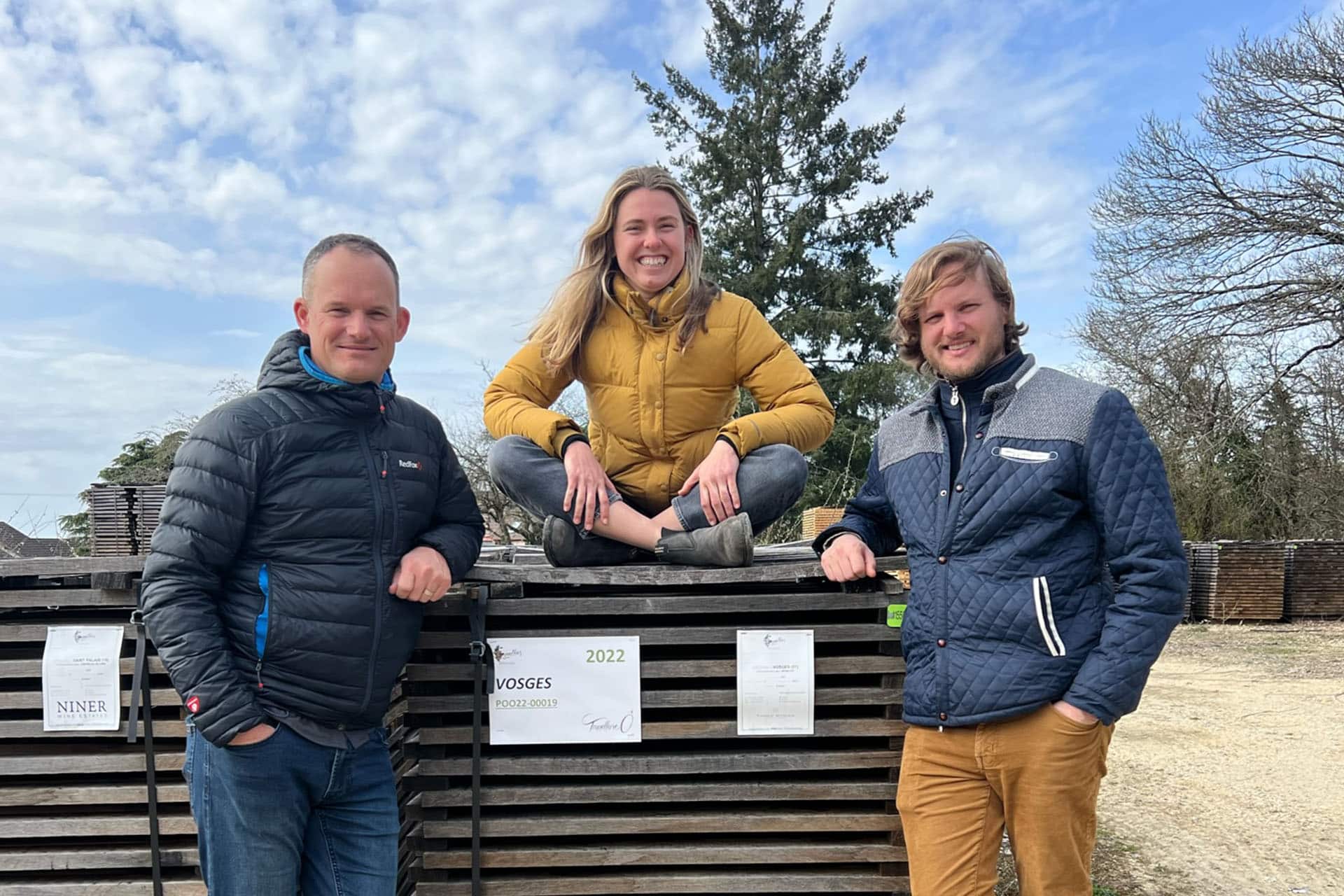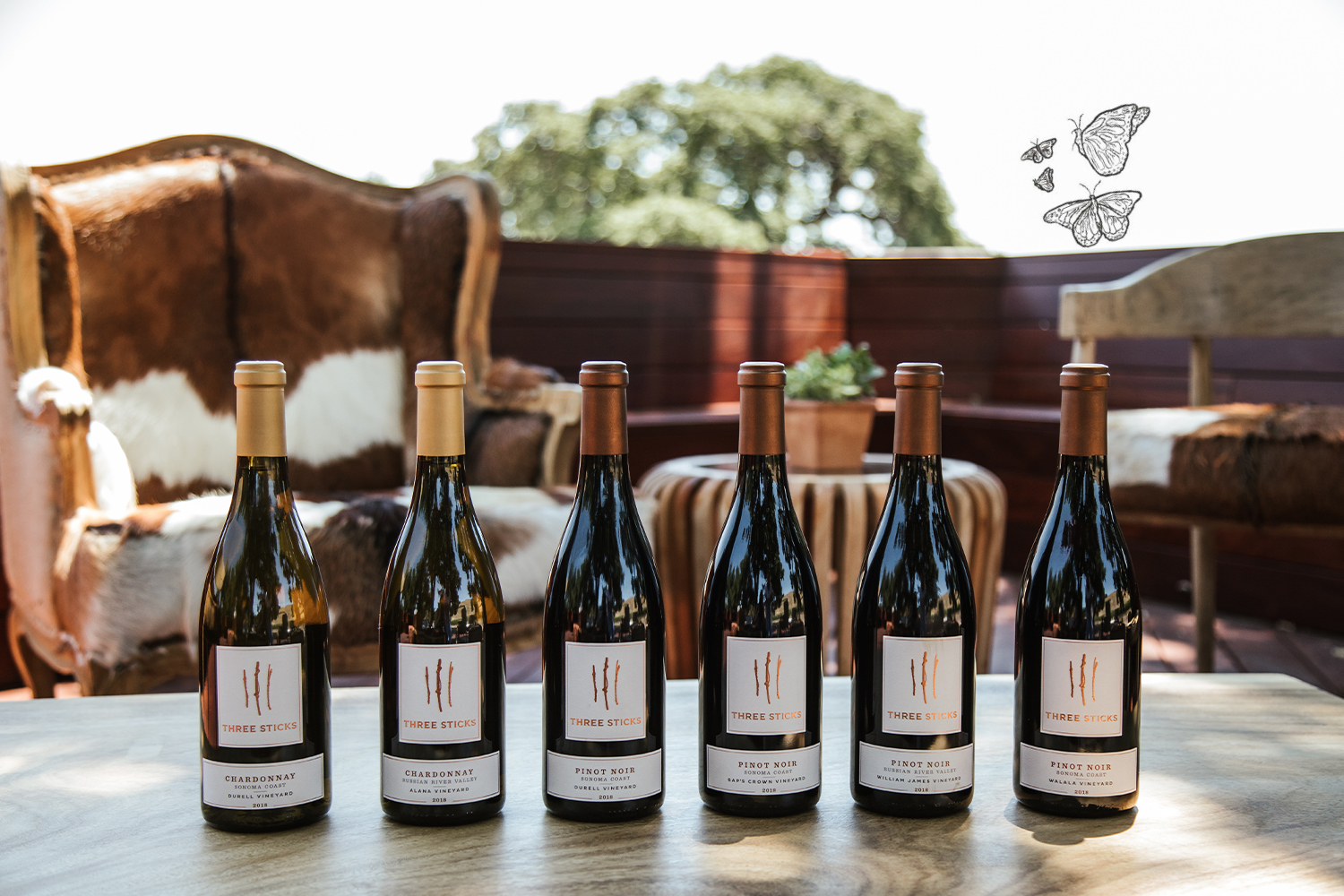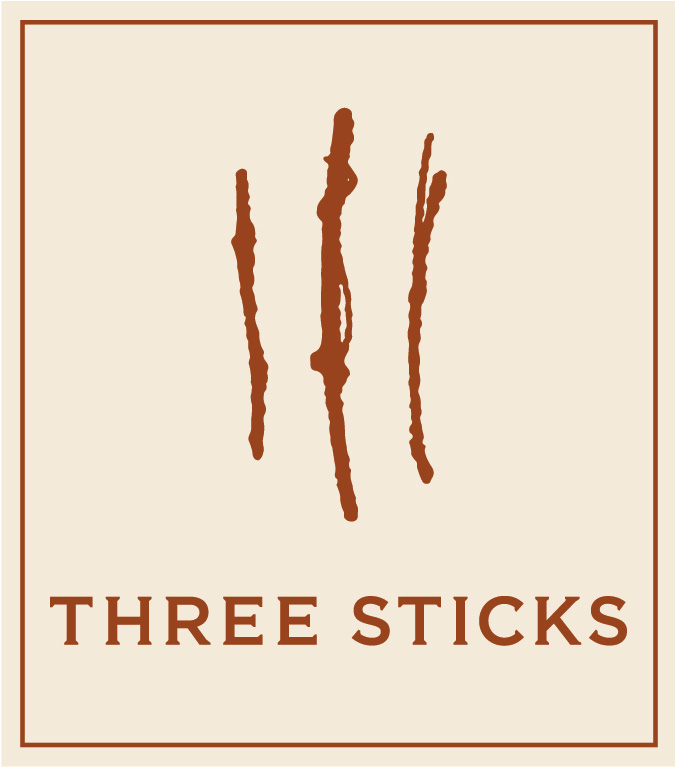
April 2023
We started this unique partnership with Tonnellerie Ô where we work with them to source wood from particular forests, age selected extra-fine grain wood at a particular stave mill, then bring that wood to the US where we work with them to apply a specific toast that we developed to best fit our wines. As a part of this relationship, we travel to France with them to visit the forests, cut down trees that will be destined for our barrels, check on our wood at the stave mills.
Much like winemaking, the art of building barrels, or “coopering”, has its own intricate processes. While much of that is normally behind the scenes, this partnership brings those out, educating us on those nuances and giving us opportunities to tweak them to better suit our specific needs. Our trips out to France lets us meet the men and women who are finding forest plots, cutting down these trees, turning them into staves, aging these staves and ultimately crafting and toasting these barrels.
“Having the ability to have a hand in not only creating a custom a custom toasting profile for our barrels but also what particular section of forest it comes from and how/where that wood is seasoned gives us a level of control that is unparalleled.” – Ryan Prichard, Director of Wine Making
“Personally visiting the forests where our barrels are crafted give me the ability to connect this part of the process with the winemaking side. These forests have their own terroir, flora and fauna – their own personality. Being able to walk those forests, visit with the fine craftspeople who select and cut those trees, seeing the team that then crafts these logs into staves where they are then left to age through years of sun, rain, snow – it creates a special relationship with these barrels.”
– Ryan Prichard, Director of Wine Making
“Visiting the forests and stave mills that our coopers source our wood from deepened my appreciation for the details that go into making our wines so special. Hearing firsthand from the Gauthier’s about the conditions that lead to tighter grain, straighter trunks, and the methods by which they go about harvesting particular trees was fascinating. I was particularly moved by the traditions and art that are steeped into their practices, especially regarding how they wait to haul the trees out until the ground is dry (to prevent compacting the soil), the dynamic duo required to cut down a tree plus its crown, and the small percentage of wood that actually qualifies to be oak staves.”
– Cassidy Block, Enologist
Club Allocation
Join Our


